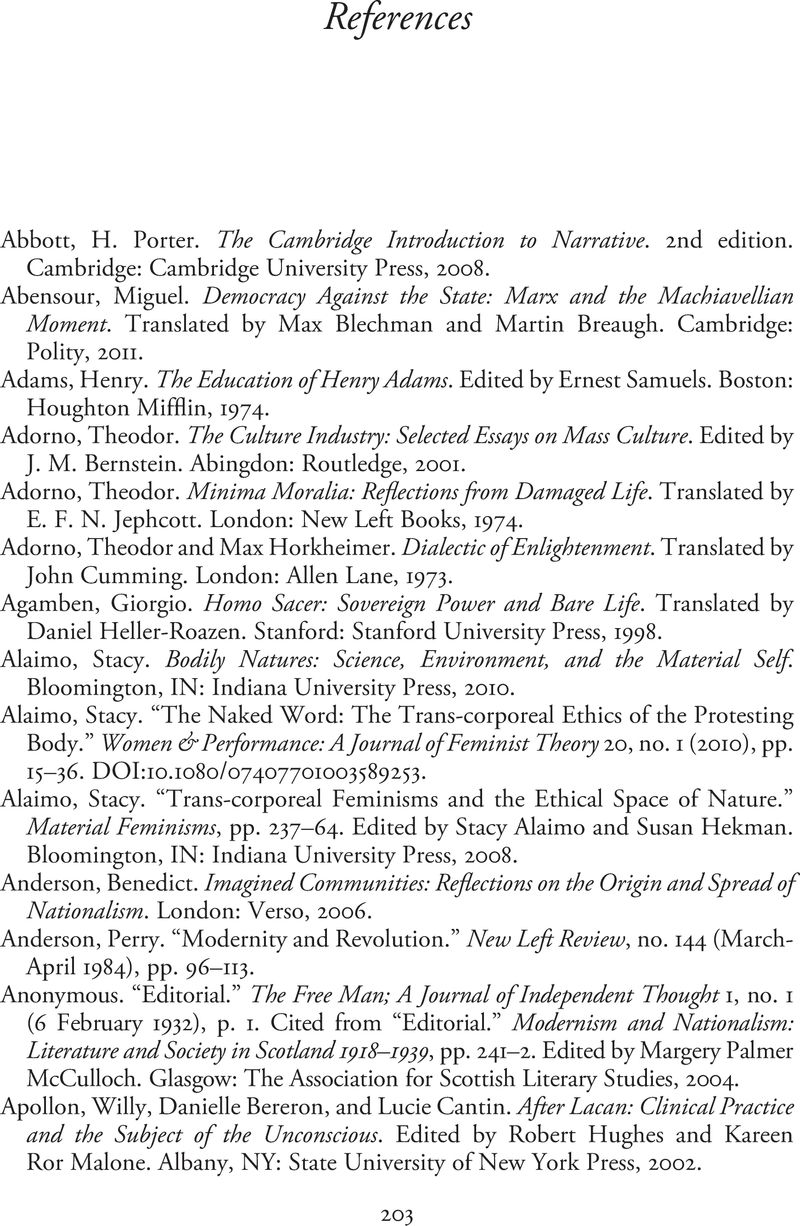Book contents
- Modernism and the Idea of the Crowd
- Modernism and the Idea of the Crowd
- Copyright page
- Contents
- Acknowledgments
- Introduction
- Chapter 1 Compositions of the Crowds of Modernism
- Chapter 2 Crowd Involvements and Attachments
- Chapter 3 Crowds and Transformation
- Chapter 4 Crowds and Agility
- Conclusion Assembly and the Agile Becoming-Subject
- Notes
- References
- Index
- References
References
Published online by Cambridge University Press: 19 November 2020
- Modernism and the Idea of the Crowd
- Modernism and the Idea of the Crowd
- Copyright page
- Contents
- Acknowledgments
- Introduction
- Chapter 1 Compositions of the Crowds of Modernism
- Chapter 2 Crowd Involvements and Attachments
- Chapter 3 Crowds and Transformation
- Chapter 4 Crowds and Agility
- Conclusion Assembly and the Agile Becoming-Subject
- Notes
- References
- Index
- References
Summary

Information
- Type
- Chapter
- Information
- Modernism and the Idea of the Crowd , pp. 203 - 217Publisher: Cambridge University PressPrint publication year: 2020
